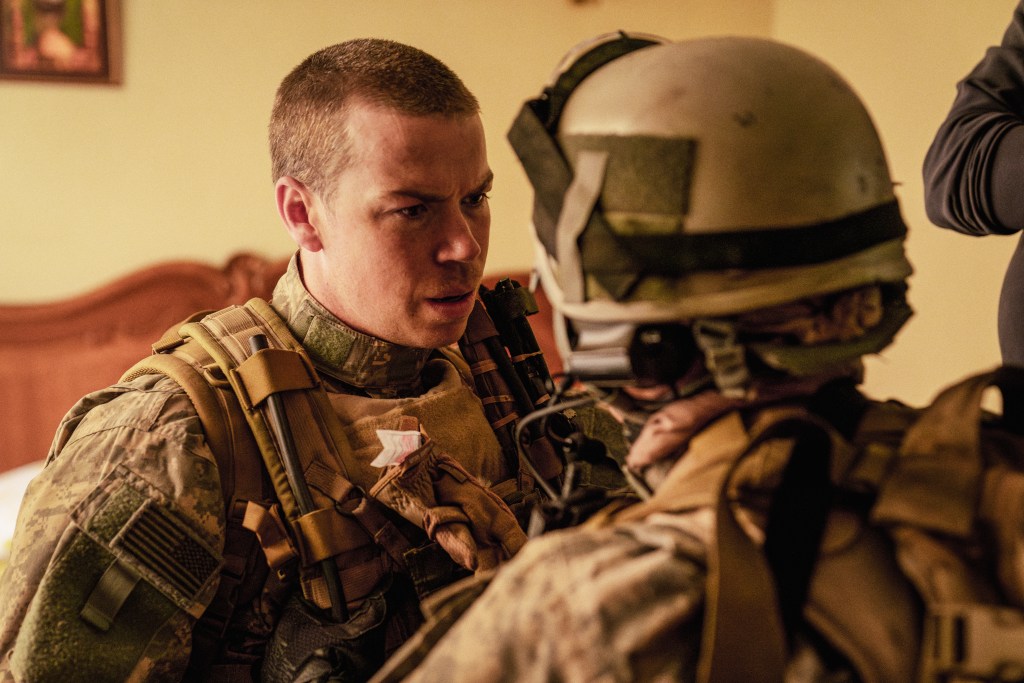Unveiling “Warfare”: A Groundbreaking Collaboration
In an unprecedented fusion of cinematic artistry and military realism, acclaimed filmmaker Alex Garland has joined forces with U.S. Navy SEAL Ray Mendoza to bring forth the film “Warfare.” This collaboration promises a raw and unapologetic look into the harsh realities of conflict, aiming to challenge the audience’s perceptions of warfare and its implications. As the film industry continues to evolve, such partnerships serve as a reminder of the importance of authenticity in storytelling, particularly in narratives that explore the complexities of human experience in war.
The Vision Behind “Warfare”
Alex Garland, known for his thought-provoking works like “Ex Machina” and “Annihilation”, has consistently pushed the boundaries of science fiction and psychological thrillers. With “Warfare,” he steps into a new realm, blending his narrative style with the insights of Ray Mendoza, a decorated Navy SEAL. This collaboration is not merely a marriage of creative minds; it reflects a deep understanding of the psychological and physical toll of combat.
Mendoza’s firsthand experiences as a SEAL provide a unique perspective that Garland seeks to incorporate into the film’s narrative. By working together, they aim to illuminate the often-hidden truths of warfare, moving beyond glorified action sequences to present a more nuanced portrayal of soldiers’ lives.
Insights from Ray Mendoza
Ray Mendoza’s background as a Navy SEAL offers an invaluable lens through which to examine military life. His journey, marked by intense training and real combat experiences, informs the film’s authenticity. Mendoza emphasizes the importance of portraying the emotional struggles and moral dilemmas faced by soldiers, stating:
“War isn’t just about battles; it’s about the people behind the uniform and the scars—both visible and invisible—that they carry.”
His commitment to showcasing the psychological impact of warfare aligns seamlessly with Garland’s artistic vision, ensuring that “Warfare” resonates on a personal level with audiences, prompting them to reflect on the broader implications of conflict.
A Raw and Unapologetic Narrative
One of the defining characteristics of “Warfare” is its intention to challenge traditional portrayals of combat in films. While many war movies tend to romanticize the soldier’s experience, Garland and Mendoza are committed to presenting a more unvarnished depiction. This approach includes:
- Realistic Depictions: Expect to see authentic scenarios that reflect the chaos and unpredictability of war.
- Character Development: The film will delve deep into the psychological states of its characters, exploring their motivations, fears, and traumas.
- Moral Ambiguity: Rather than presenting clear-cut heroes and villains, “Warfare” will explore the complex moral landscapes that soldiers navigate.
This commitment to authenticity is vital in today’s cinematic landscape, where audiences crave stories that resonate with real-life experiences rather than fictionalized accounts.
Exploring the Psychological Toll
The mental health of veterans has become a central topic in recent years, with increasing attention being paid to issues such as PTSD, anxiety, and depression. “Warfare” aims to shed light on these critical issues by illustrating how combat affects soldiers long after they leave the battlefield.
Garland’s previous works have often touched on psychological themes, and his collaboration with Mendoza allows for a deeper exploration of the mental health challenges faced by military personnel. Through character arcs that reflect real struggles, the film seeks to foster understanding and empathy among viewers.
Building Anticipation: The Marketing Strategy
The release of “Warfare” is generating significant buzz within the film community. The marketing strategy includes leveraging social media platforms, behind-the-scenes footage, and interviews with Mendoza and Garland to create anticipation. By sharing personal stories and insights, they aim to connect with audiences on an emotional level, making the film’s themes more relatable.
Moreover, the film is set to feature collaborations with veterans and mental health organizations to promote awareness about the psychological effects of warfare. This proactive approach not only enhances the film’s credibility but also positions it as a tool for dialogue around mental health in the military.
Film Festivals and Premieres
While specific release dates are yet to be announced, “Warfare” is expected to make its debut at major film festivals. These platforms provide an opportunity for the film to engage with audiences who are passionate about authentic storytelling and social issues. Festival screenings often lead to discussions that can further amplify the film’s message, reaching a broader audience beyond traditional cinema-goers.
Conclusion: A New Era of War Cinema
The collaboration between Alex Garland and Ray Mendoza to create “Warfare” signifies a new era in war cinema—one that prioritizes authenticity and emotional depth over sensationalism. As filmmakers continue to explore the multifaceted nature of conflict, this film stands out for its commitment to presenting an unfiltered look at the realities of warfare.
By merging Garland’s visionary storytelling with Mendoza’s real-world experiences, “Warfare” has the potential to not only entertain but also educate and inspire dialogue about the true cost of war. As audiences await its release, the anticipation builds for a film that dares to confront the complexities of combat and the human condition.
See more CNET Live

